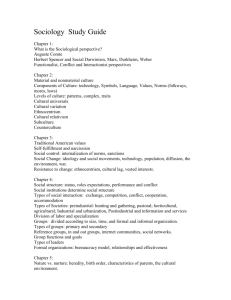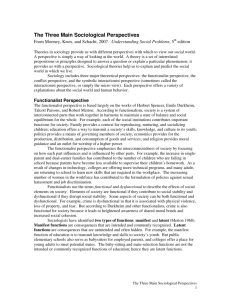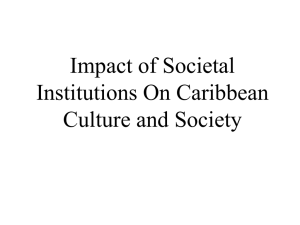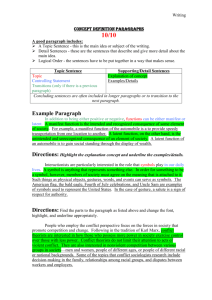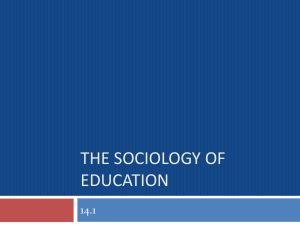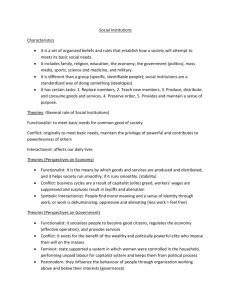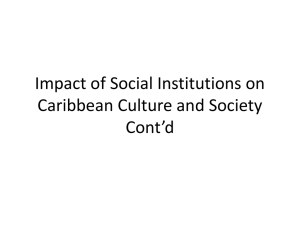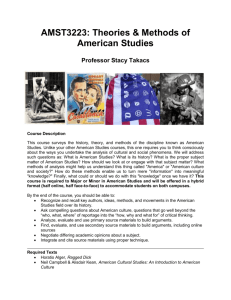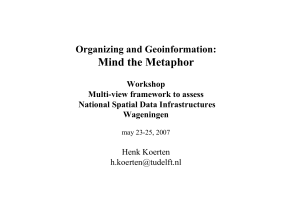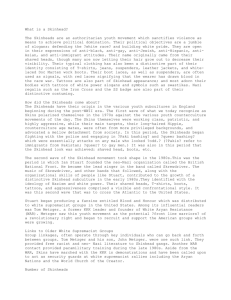Sociology of Conflict Test Review-1
advertisement
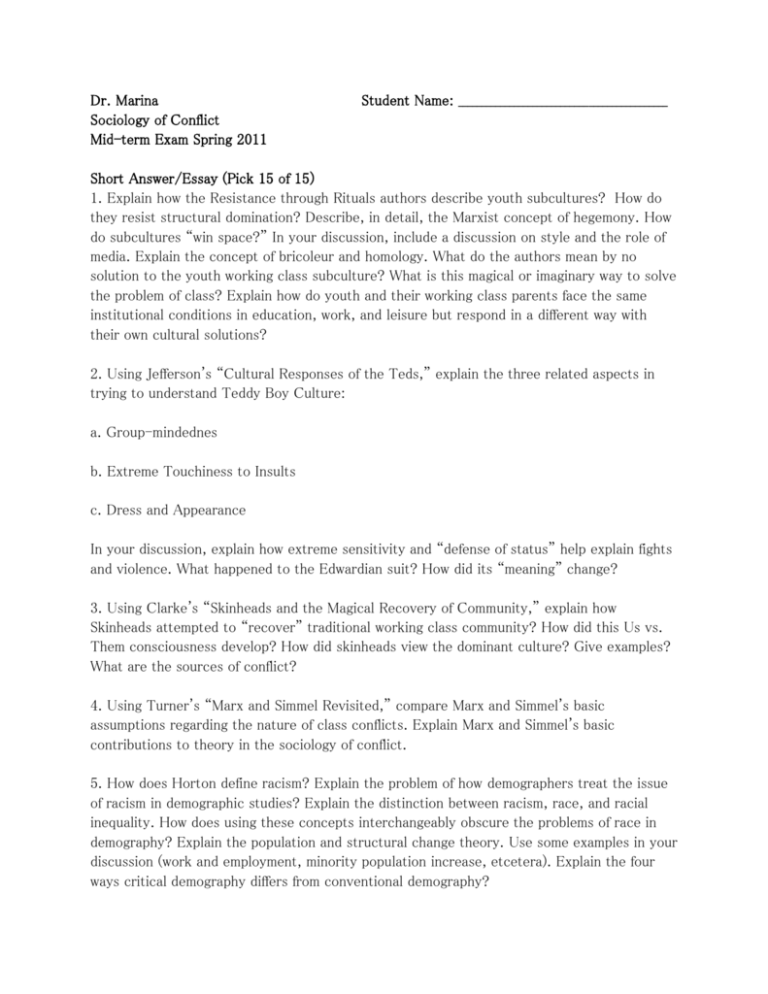
Dr. Marina Sociology of Conflict Mid-term Exam Spring 2011 Student Name: _____________________________________________ Short Answer/Essay (Pick 15 of 15) 1. Explain how the Resistance through Rituals authors describe youth subcultures? How do they resist structural domination? Describe, in detail, the Marxist concept of hegemony. How do subcultures “win space?” In your discussion, include a discussion on style and the role of media. Explain the concept of bricoleur and homology. What do the authors mean by no solution to the youth working class subculture? What is this magical or imaginary way to solve the problem of class? Explain how do youth and their working class parents face the same institutional conditions in education, work, and leisure but respond in a different way with their own cultural solutions? 2. Using Jefferson's “Cultural Responses of the Teds,” explain the three related aspects in trying to understand Teddy Boy Culture: a. Group-mindednes b. Extreme Touchiness to Insults c. Dress and Appearance In your discussion, explain how extreme sensitivity and “defense of status” help explain fights and violence. What happened to the Edwardian suit? How did its “meaning” change? 3. Using Clarke's “Skinheads and the Magical Recovery of Community,” explain how Skinheads attempted to “recover” traditional working class community? How did this Us vs. Them consciousness develop? How did skinheads view the dominant culture? Give examples? What are the sources of conflict? 4. Using Turner's “Marx and Simmel Revisited,” compare Marx and Simmel's basic assumptions regarding the nature of class conflicts. Explain Marx and Simmel's basic contributions to theory in the sociology of conflict. 5. How does Horton define racism? Explain the problem of how demographers treat the issue of racism in demographic studies? Explain the distinction between racism, race, and racial inequality. How does using these concepts interchangeably obscure the problems of race in demography? Explain the population and structural change theory. Use some examples in your discussion (work and employment, minority population increase, etcetera). Explain the four ways critical demography differs from conventional demography? 6. Explain the following quote: The ideas of the ruling class are in every epoch the ruling ideas, i.e. the class which is the ruling material force of society, is at the same time its ruling intellectual force. The class which has the means of material production at its disposal, has control at the same time over the means of mental production, so that thereby, generally speaking, the ideas of those who lack the means of mental production are subject to it. The ruling ideas are nothing more than the ideal expression of the dominant material relationships, the dominant material relationships grasped as ideas. Marx, German Ideology (1845) 7. Demonstrate the differences between the conflict and functionalist perspective by making two different arguments explaining the causes of crime and deviance and another social problem of your choice. 8. Explain the how the following model gives some perspective on the causes of conflict in social life. Be sure to use examples to substantiate your claims. Merton's typology of individual adaptations to environmental pressures Type of Adaptation 1. Conformity 2. Innovation 3. Ritualism 4. Retreatism 5. Rebellion Cultural Goal + + – – + Institutionalized Means + – + – + Note: + signifies acceptance, – signifies rejection, and + signifies rejection of prevailing goal or means and substitution of new goal or means. 9. Explaining the current debate on sagging pants using a conflict and functionalist perspective. In your discussion, think about how the dominant culture views sagging pants and the recent debate to curtail the practice. Use ideas from Resistance through Rituals to discuss how sagging pants resist the dominant culture. What function might sagging pants serve for youths and what functions does outlawing the practice serve for the dominant culture? 10. Explain the emergence of the global movement against capitalism, in particular, to organizations like the IMF and WTO. Explain how a network of resistance developed. How would you describe this resistance to capitalism? Explain. What is neo-liberalism and why are people resisting it? Explain. 11. Explain the ways each of the classical sociological theorists viewed religion (Marx, Weber, and Durkheim). Be specific and detailed. What are the manifests and latent functions of religion like, for example, Pentecostal practices in the class video? What kind of approach might you use to understand institutional functions of religion (Functionalist, Marxist, or Conflict Perspective)? Explain. Finally do church members experience alienation or empowerment? Does religion serve as a tool to keep the poor and working class accepting of their social positions or a source of hope and inspiration? Explain but keep your sociological “hat” on. 12. In detail, describe how Becker uses analytic induction to explain how people become marijuana user. How is this process a social one? Why is this explanation sociologically important. Create a fictitious examples using Becker's type of thinking to explain someone becoming another type of deviant. 13. Using the arguments in Thinking Twice and class discussions of functionalist and conflict perspectives, make two different arguments on the following claim: Poverty causes crime. You might also want to use functionalist and conflict perspective in your discussion. 14. Using the arguments in Thinking Twice and class discussions on the functionalist and conflict perspectives, make two different arguments on whether economic inequality benefits society. 15. Using the arguments in Thinking Twice and class discussions on the functionalist and conflict perspectives, discuss whether Western aid benefits other countries. Explain in detail the benefits and consequences to other countries receiving Western aid. Required Essay (20 points) Use the ideas of Massey and Denton to explain the construction and persistence of the American ghetto. Your discussion should include, among other things, answers to the following questions. How are the problems of segregation mainly structural, not individual? What is the concept of hypersegregation. What are the dimensions of hypersegregation? How does the creation of the black ghetto undermine the American ideology of getting ahead though hard work and education? How do Massey and Denton challenge the “culture of poverty” argument that blames the victim? Explain. How are spatial barriers also barriers to social mobility? In your discussion, include the key elements of segregation and its effects on individual poverty? How was the Black ghetto in the early 20th Century different from the Italian and Polish ghettos? What accounts for the difference? Why does housing segregation worsen and concentrate poverty? Finally, how does residential segregation and spatial isolation lead to linguistic bifurcation (e.g. Ebonics vs. Standard English), and an oppositional counter culture?
